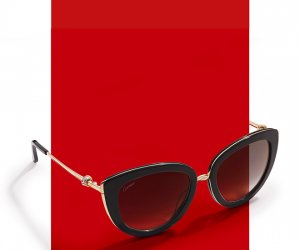
How vintage mountaineering sunglasses looked thanks to the work of Frenchman Jules Baud, the founder of Julbo
Mountaineering sunglasses are about as old as when humans decided that climbing mountains and scaling new heights was a good idea. As soon as these madmen started encountering the blinding rays of unfiltered sunlight in the upper atmosphere, man realised that if we were going to go these places – fly above the clouds or climb massive peaks glacial snow, we were going to have to deal with the brutal reflections of blazing light unbroken clouds.

Some of the oldest companies claim that this new breed of sunglasses made for the adventurous were developed as early as the 1880s. As Doug K. Scott had outlined in his book Big Wall Climbing, we begin summiting mountains in the 1850s, which meant that 30 years of development time and innovation by pioneers like Frenchman Jules Baud, the founder of Julbo, had been looking into the eye protection needs of Alpine mountaineers and Charmonix crystal miners since 1888; but it wasn’t until the 1950s, that Julbo heralded an usual yet stylishly appointed visage of what they considered the “modern sunglasses” – leather shielded in the usual areas which would typically allow light in, like at the nose bridge and the temple areas, Julbo Vermonter shades introduced the world to a style of classical sunglasses that would never be created again with such panache. That is until today.

Cartier’s modern interpretation – Santos de Cartier, taking cues from aviator Alberto Santos and the death defying antics of early mountaineer pioneers who climbed Mont Blanc. Retail: S$1290
Scaling heights: Cartier Unveils an All-New Fall/Winter 2020 Eyewear Collection Inspired By Flight
Suffice it to say, the advent of flexible materials like titanium and high-tech acetate plastics, have meant that most sunglasses today adopt a more futuristic wraparound style instead of the leather bound sunglasses from the 19th century. Cartier revives this long lost aesthetic with their latest Fall/Winter 2020 eyewear collection; sans eye-cup sunglasses, the classicism is a welcome throwback to an era when outdoor accessories were less technical and more stylish.
Through utilizing geometric shapes and signed details, Cartier’s savoir-faire comes to life in the all-new Fall/Winter 20 Eyewear collection. With a distinguishing Santos de Cartier style, the collection aims to evoke memories of the iconic watch created in 1904 for aviator Alberto Santos Dumont. The navigator and pilot designs thus exude a strong masculine aesthetic that is bold and instantly recognizable, whilst visible screws punctuate the luminous contours to recall airplane rivets, and the frames’ sharp profiles echo the emblematic cut of the Santos watchcase.
The Maison’s passion for high refinement is expressed by the Trinity de Cartier frames inspired by the namesake ring and its signature interlaced design. A luminous mix of materials and precious finishes elevates the elegant proportions of the sunglass and optical styles, which bear a front knot detail and a miniature ring as a symbol of friendship, love and fidelity.
By Julia Roxan







